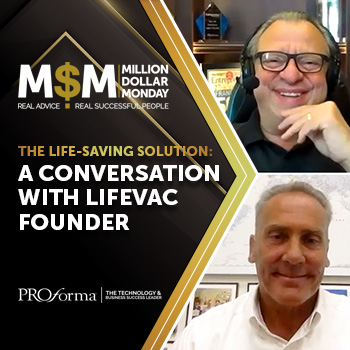The big hope right now for everyone is that we can go back to normal soon. We all want to see our friends and extended families, watch our favorite teams, hit the beach, or attend our regularly scheduled trade shows and networking events. The timetable of that happening is dependent on a variety of factors, the biggest being limiting the spread of the coronavirus to a point where hospitals can handle a reasonable amount of new patients. This is what everyone is talking about when they say they are taking steps to “flatten the curve.”
Once we’re at a point where society is able to open back up for business resembling something like normalcy, things aren’t going to go from zero to 60, however. There are still going to be holdovers from this time for quite a while until a vaccine is developed and fully distributed.
Because of this, it’s unrealistic to believe that the minute stay-at-home orders loosen and restaurants open back up for business that available stock of things like hand sanitizer will reach pre-pandemic levels. This could potentially be an issue for a long time, especially as people start venturing back outside and make frequent contact.
What’s interesting is that it’s not just shortage of the hand sanitizer itself that’s causing the supply issues. It’s also a shortage of the plastic bottles it comes in. Companies that manufacture the flip-top bottles are dealing with a supply of polyethylene terephthalate (PET) that doesn’t match demand for hand sanitizer. Because of this, manufacturers are prioritizing where their supply goes.
“We’re not selling 6 oz. containers to hand sanitizer companies, we’re selling those to yogurt companies,” Amy Waterman, a spokesperson for Berry Global Group Inc., told Bloomberg.
Other companies are scrambling to meet hand sanitizer bottle demand by using components of other products, like beverage or cosmetic container tops, for hand sanitizers.
It’s good news, in a way, to see that companies have been quick on their feet to solve the issue, but it’s frustrating and scary nonetheless to see demand spike so drastically for an essential product without the supply to match.
And other previously unrelated companies have jumped into meet demand as well, such as Tito’s Vodka and RPP Products, which usually makes automotive fluids. But RPP Products has run into the same issue as others.
“If you want to go out and try to find bottles that everyone wants to use, you won’t be using them,” RPP CEO Eric Zwigart told Bloomberg. “You’ll be waiting weeks and months.”
As previously stated, it’s not just the sanitizer shortage itself. But that’s still a problem. Primarily, there is a shortage of the chemical compounds needed to make the gel. Part of that issue is actually as a result of companies like Tito’s and RPP joining the party.
Rakesh Tammabattula, CEO of cosmetics company QYK Brands LLC, told Bloomberg that the company has less than two weeks’ worth of the necessary chemicals because of these companies now producing hand sanitizer and “[emptying] the inventory of everything that’s available.”
Tammabattula said that hand sanitizer suppliers now have to go to big companies with more capabilities, like GOJO Industries, which makes Purell, and CVS Health Corp.
In the promotional products industry, which has been facing this issue since the beginning of March, unusually large bulk orders have kneecapped their production capability.
“I think the real anomaly for us on the sanitizer stuff is not the short run stuff, it’s the high quantity stuff—someone coming in and saying, ‘I want 300,000,’” said Brandon Mackay, president and CEO of SnugZ USA, Jordan, Utah. “And we’re just not used to those types of orders in this industry.”
SnugZ has continued to manufacture its hand sanitizers in its Utah facility, but has had to look elsewhere in the U.S. for pieces like caps and alcohol. Other suppliers have found themselves in similar situations, with demand far outpacing supply and some putting a temporary hold on new orders. Timelines on most sanitizer orders are in the weeks range or longer.
“I think you do [have a plan] when your business doubles, but when it’s sextuples you don’t,” said Mackay. “When it doubles, you can throw bodies at that. You can throw resources at that. When it grows by six times its natural growth, it’s an absolute combat zone.”



